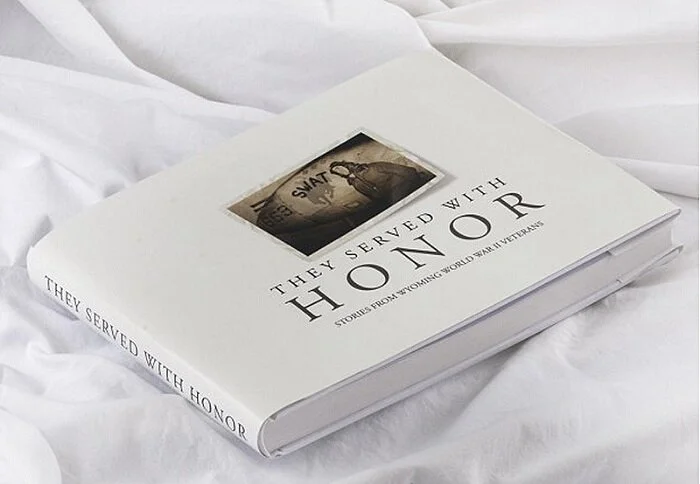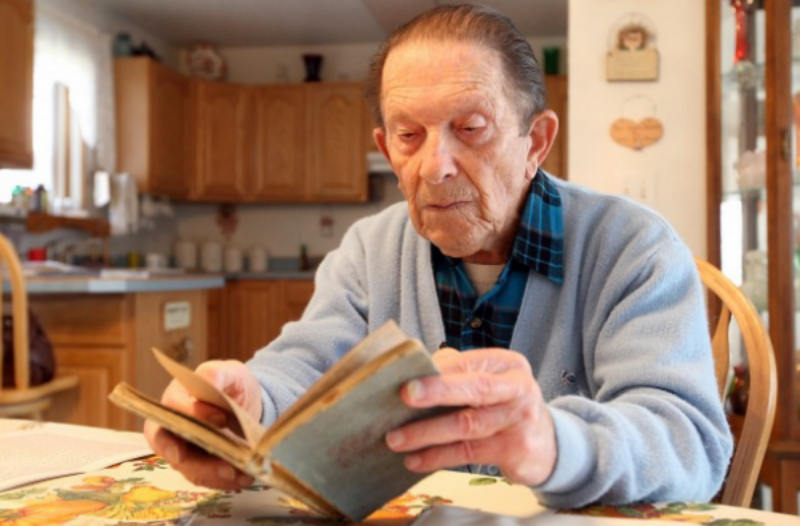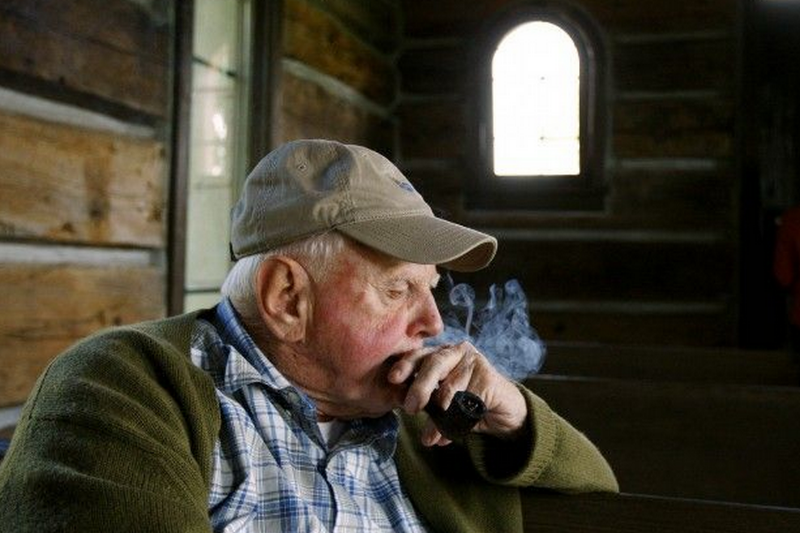They Served With Honor
Stories From Wyoming World War II Veterans
In early 2010, the publisher of the Casper Star-Tribune, Wyoming's only statewide newspaper, asked department leaders for ideas on generating new revenue and raising the paper's community profile. I proposed They Served With Honor, a collection of profiles on Wyoming's aging World War II veterans. I knew the men and women who served in the war were passing away at an alarming rate, and their stories were passing with them.
I served as project leader and editor, and I also wrote many of the profiles. As the first year of the project came to a close, it was clear that readers wanted more. We had amassed a nomination list of more than 200 veterans, and we extended the project for another year. In the end, the project profiled 111 Wyoming World War II veterans. In March 2012, we compiled all the profiles into a special-edition book with a forward written by Wyoming Gov. Matt Mead.
At the end of the project, we hosted a book signing and hundreds of community members lined up to meet the veterans in person. The entire project won a first place Special Merit Award from the Wyoming Press Association in 2011 and Outstanding Historical Publication from the Wyoming Historical Society.
See the entire collection here, or peruse some of my favorite profiles on this page.
Star-Tribune photo by Kerry Huller
1st Lt. Donald E. Muston, POW
Donald E. Muston woke up on his back, looking up at the clouds in the sky. It took a moment to realize he was falling. He spotted his chute pack on his chest and pulled the little red handle, just like he’d been taught. Then he fell vertically as pieces of his B-17 dropped by him, including a parachute with no one in it.
“I decided then and there that the parachute was really quite an invention and there was nothing to jumping,” Muston said, reading from a book 66 years old: “A Wartime Log for British Prisoners.” It was given to him empty. In more than 300 days as a German prisoner of war, Muston filled it cover to cover.
Star-Tribune photo by Dan Cepeda
Cpl. LaVerne 'Bud' Naughton, Iwo Jima
Fourth of July, Bud Naughton used to grab a couple of bottles of whiskey and head for the hills. He couldn’t take all that racket.
“I guess when you are scared to death for 25 days, it screws up your head,” he said. “Or it did mine, anyway.”
Star-Tribune photo by Dan Cepeda
1st Lt. Raymond Plank, Pacific Theater
There is no bigger thrill, Raymond Plank says, than watching a squadron of American bombers going in on a bomb run.
“The flight ahead of you is flying over the antiaircraft fire of the Japanese. This antiaircraft fire is bursting everywhere around you,” he said. “So if you are, say, the second squadron to go over the target, you’re watching the first squadron get the s — shot out of them.”
Star-Tribune photo by Dan Cepeda
Star-Tribune photo by Kerry Huller
Mary Burgess, American Red Cross
She danced through the war, she says, smiling no matter what her partners confided and even when all she wanted to do was cry.
"We were the morale builders," said Mary Burgess, an American Red Cross volunteer from 1942 to 1945. Her job was to be a comfort. To smile, to sing. To help servicemen forget the war, if only for a moment.
Pfc. Joe Shinmori, 442nd Infantry Regimental Combat Team
After Pearl Harbor, Japanese people in Converse County were restricted to a 25-mile radius. All knives over 10 inches were confiscated, along with any binoculars, short-wave radios, firearms and anything else that could be perceived as a threat to the United States.
Japanese families on the West Coast, including Shinmori’s brother-in-law, were told to pack one suitcase and moved to relocation camps, including Heart Mountain in Wyoming. But from this atmosphere of prejudice and mistrust was born the 442nd Infantry Regimental Combat Team, the most highly decorated military regiment in U.S. history.





